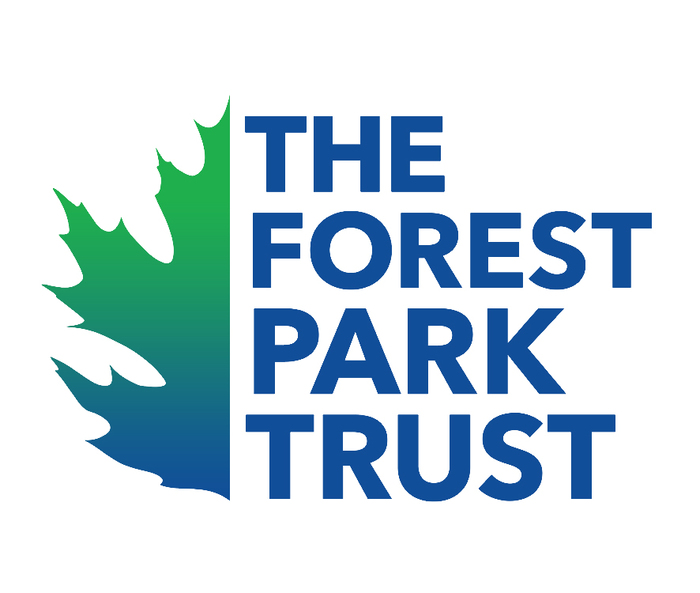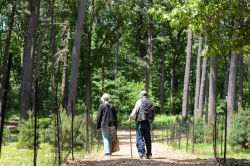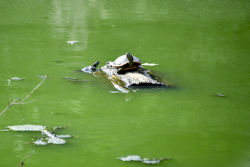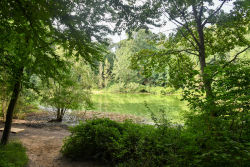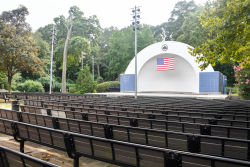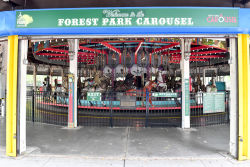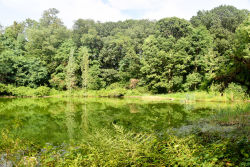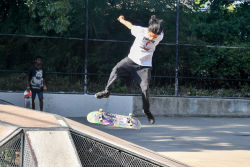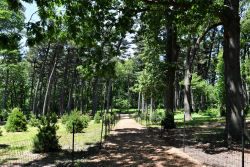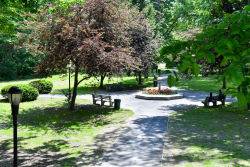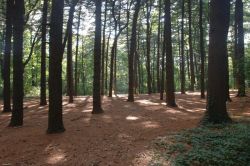Forest Park
The Daily Plant : Thursday, April 24, 2003
ASIAN LONGHORNED BEETLE DISCOVERED IN FOREST PARK
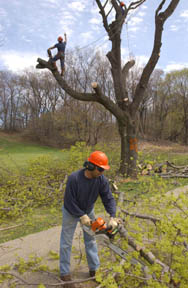
On Monday, April 21, Parks & Recreation officials and community leaders gathered in Forest Park to announce the discovery of twelve trees infested with the Asian Longhorned beetle. Forest Park, in Queens, falls within the quarantine zone, determined by the United States Department of Agriculture (USDA), which regulates the transport of wood, and outside of the treatment area for 2002. The discovery is significant because it indicates the beetle is spreading into new parts of New York City. Through the efforts of Parks & Recreation and the USDA, regular surveys of quarantine zones proved successful with this recent discovery.
Council Member Joseph P. Addabbo, Jr., Director of the Queens Botanical Gardens Susan Lacerte, Parks & Recreation Commissioner Adrian Benepe, President of the Forest Hills Community Civic Association Barbara Stuchinski, and Co-Director of the USDA Cooperative ALB Eradication Program Joseph Gittleman were among those who gathered at the announcement on Monday.
"This recent discovery in Forest Park shows the effectiveness of survey efforts to contain the Asian Longhorned beetle and underscores the need for continued vigilance," said Commissioner Benepe. "It is vital that we do everything we can to eradicate the beetle which threatens our entire north eastern forest, including New York City’s 5 million trees. Working in partnership with the USDA and the State Department of Agriculture & Markets, we will preserve our urban forest from devastation by this insect invader."
A total of 3,774 trees in New York City have been removed since 1996 because of infestation by the Asian Longhorned beetle. The Asian Longhorned beetle was first found in the Greenpoint section of Brooklyn in 1996. Subsequent infestations occurred in Bayside and Flushing in early 1999; on the Upper East Side of Manhattan in the summer of 1999; on the Lower East Side of Manhattan and in Flushing Meadows Corona Park in the summer of 2000; in Bedford-Stuyvesant and Midtown Manhattan in 2001; and in Central Park in early 2002.
The Asian Longhorned beetle is about ¾ to 1 ¼ inches in length, is black and shiny, and bears white spots and long antennae. The beetles attack many different hardwood trees including maple, birch, horsechesnut, poplar, willow, elm, and ash. All infested trees are cut down, chipped, and incinerated, a standard practice for trees invaded by the Asian Longhorned beetle.
Parks & Recreation encourages New Yorkers to help in the battle against the Asian Longhorned beetle. Signs to look for are round exit holes about the size of a dime and coarse sawdust created by beetle larvae as they bore into the main tree stem and branches. There may also be oval pits in the tree bark that are egg-laying niches. Sap may flow from these niches, especially on maple trees, as the larvae feed inside the tree.
In 2002, 180,558 trees were surveyed for the Asian Longhorned beetle by contractors hired by the USDA. This year to date, 23,733 trees have been surveyed.
QUOTATION FOR THE DAY
"Peace, it’s wonderful."
Father Divine
(1882-1965)
Check out your park's Vital Signs
Clean & Safe
Green & Resilient
Empowered & Engaged Users
Share your feedback or learn more about how this park is part of a
Vital Park System

Know Before You Go

Links
Contacts
Forest Park Administrator: (718) 235-0815
Forest Park Golf Course: (718) 296-0999

